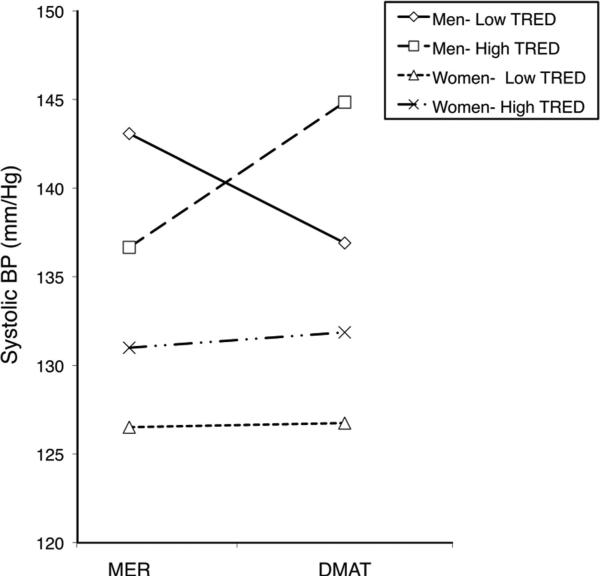Figure 3.
Simple slopes depicting the three-way interaction between participant sex, time (from the MER task to the DMAT), and task-rated emotional difficulty (TRED) predicting changes in SBP across task periods. Only men evidenced significant simple slopes. Men with high TRED (1 SD above the TRED mean) scores evidenced a significant increase in systolic blood pressure (SBP) from the MER task to the DMAT, whereas men with men with low TRED scores (1 SD below the TRED mean) evidenced a significant decrease in SBP.

